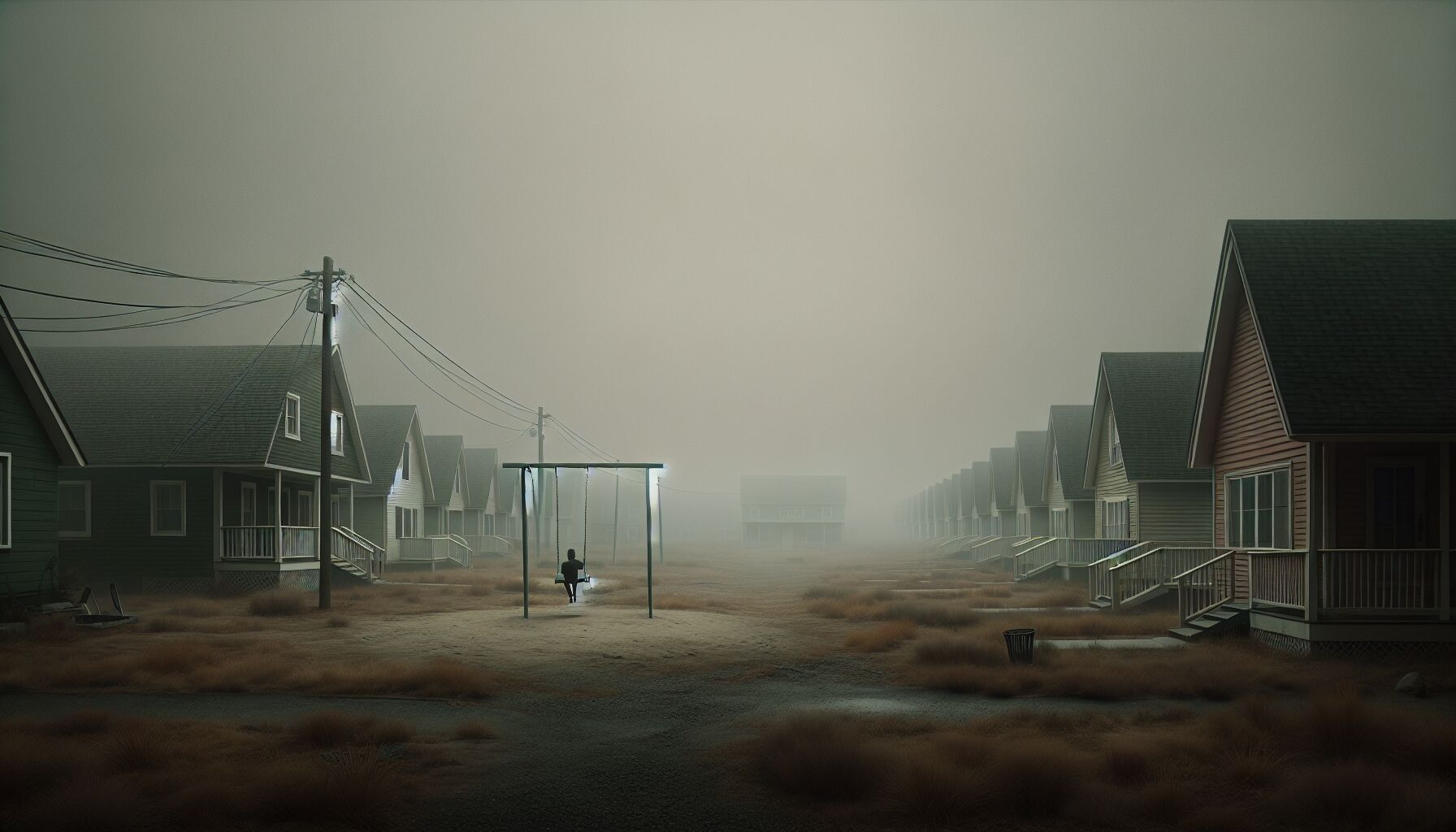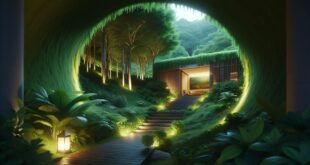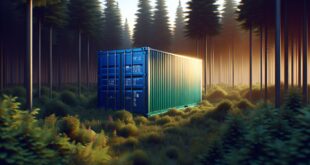 Suburban sprawl might seem like the quintessential modern living dream — a house with that white picket fence and a yard big enough for a barbecue — but there’s an impact lurking beneath the tidy lawns and paved cul-de-sacs that threatens the very fabric of our ecosystems. When we expand outwards, nature contracts. It’s a subtle yet profound consequence that’s reshaping our environment and, in some ways, our relationship to it.
Suburban sprawl might seem like the quintessential modern living dream — a house with that white picket fence and a yard big enough for a barbecue — but there’s an impact lurking beneath the tidy lawns and paved cul-de-sacs that threatens the very fabric of our ecosystems. When we expand outwards, nature contracts. It’s a subtle yet profound consequence that’s reshaping our environment and, in some ways, our relationship to it.
You’ve got to wonder, how did we drift so far from the wild spaces that once defined our lands? The answer’s in how suburban expansion eats away at habitats, leading to fragmented ecosystems. Picture this: a corridor of trees providing shelter for migrating birds gets sliced by new roads, leaving them floundering like fish out of water. These birds, along with countless other species, rely on contiguous habitat for survival. Break those connections, and their ability to thrive goes right out the window.
Let’s dig even deeper. Consider how paved surfaces interrupt the earth’s natural water cycle. Rain that once nurtured the soil is now channeled off into drains, leaving both the ground and its denizens a little parched. It’s like trying to grow a garden without tilling the earth. As the concrete jungles expand, so do their thirsts, straining local water tables with increased demand. And when the climate throws a curveball — say, a drought or an unprecedented storm — these stretched resources can falter when they’re needed most.
Indeed, the impact isn’t just vertical. The horizontal spread of suburban zones chips away at air quality too. Longer commutes for inhabitants boost vehicular emissions, blanketing our towns in a haze that’s more than just a visual pollution. Remember what Albert Einstein once mused? “Look deep into nature, and then you will understand everything better.” It’s high time we heed those words and rethink our neighborhoods with the larger world in mind.
Yet, it isn’t all past sins and present challenges. There are signs of greener horizons, folks. Enter the concept of smart cities where thoughtful planning balances development with nature. By incorporating green spaces within urban designs, cities can form a harmonious blend of human and habitat needs. It’s about building upwards, having more communal gardens, preserving wetlands, and creating wildlife corridors that let critters roam as intended.
Change won’t come overnight, like a switch flipped. Instead, it’s more of a gentle unfolding, as societies recognize that conscious expansion — not just in land but in understanding — is crucial. We can take a leaf from the old oak’s book: grow, but grow wisely, with roots firm and branches reaching out, nurturing both land and life.
Let’s hold dear the symbiosis that once existed and can exist again. It’s not too late. We can still stitch together the silken fibers of our ecosystems, keeping them and ourselves stronger together. For more insights on sustainable living and urban planning, the U.S. Department of Energy offers valuable resources that light the path forward.
Infrastructure inefficiencies
Let’s dive into the not-so-visible side of suburban sprawl — its infrastructure impact. Imagine for a moment the sprawling grid of roads and highways connecting the myriad suburban pockets. It might appear seamless at first glance, a concrete web linking lives and opportunities. But beneath the surface lies a tangled knot of inefficiencies. Why so? Because suburban expansion often outpaces the infrastructure designed to support it, leading to a mismatch reminiscent of too-small shoes — restrictive and uncomfortable.
Consider this: the more we spread out, the more roads, sewage systems, and electrical networks stretch thin. This overextension comes at a hefty cost to both the wallet and the planet. Longer utility runs increase energy consumption, as power lines must travel greater distances to reach each home. It’s like running a marathon when you’re only prepared for a sprint — energy loss becomes inevitable. Expanding suburbs also demand more waterlines and sewers, yet they seldom keep up with growth, causing overflows and inefficiencies. The tap never runs dry, but often runs wasteful.
Furthermore, there’s the road conundrum. More roads invariably mean more maintenance, traffic, and pollution. And let’s not forget the toll on patience — bumper-to-bumper traffic can fray the nerves quicker than a mosquito at a picnic. The financial burden of maintaining this infrastructure affects local governments, often leading to increased taxes or cuts in other essential services.
Is there hope for smarter alternatives? That’s where the idea of *smart cities* kicks in. By focusing on intelligent design and planning, urban centers can dodge many pitfalls of sprawl. Picture infrastructure that grows organically with the community, using technology to optimize energy and resource use. The integration of sensors and data analysis can preemptively address issues before they snowball into bigger headaches.
There’s a certain elegance to cities that resemble intricate machine gears, each part moving in harmony with others. We find inspiration in what Socrates once said: “The secret of change is to focus all your energy not on fighting the old, but on building the new.” It’s about shifting away from inefficient sprawl towards a vision of sustainable, well-connected living spaces that echo harmony with nature — not just space fillers.
In a world where seamless integration of technology and sustainability is not a trend but a necessity, smart cities offer a blueprint for the future. They’re places where walking paths connect homes to nature reserves, and public transport links blend with lush parks and solar-powered amenities. They emphasize reducing, reusing, and renewing. Let’s take the lessons from sprawling suburbs as reminders of what not to do and delve deeper into creating connected, efficient, and resilient communities.
Want to explore how innovation can reshape our urban landscapes? The folks over at the NCBI offer some compelling insights into the future of urban living. It’s time to rethink, redesign, and, most importantly, reignite our passion for a balanced existence, one block at a time.
Challenges to community development
 Ever wonder why some neighborhoods feel like an extension of office cubicles? Rows of identical houses, each isolated yet crammed next to one another, don’t just affect aesthetics; they can murk up community development. The idea of suburban expansion promised idyllic living—think wide lawns and picket fences. But often, what it’s really delivered is weaker bonds between residents and a disjointed sense of belonging.
Ever wonder why some neighborhoods feel like an extension of office cubicles? Rows of identical houses, each isolated yet crammed next to one another, don’t just affect aesthetics; they can murk up community development. The idea of suburban expansion promised idyllic living—think wide lawns and picket fences. But often, what it’s really delivered is weaker bonds between residents and a disjointed sense of belonging.
Let’s chat connections. A thriving community is naturally interwoven, fostering interaction and nurturing relationships—the kind that make you feel at home, not just in your house. However, sprawling suburbs disrupt this potential. Expansive layouts mean residents often travel by car instead of strolling down the street, missing those casual chats that spark unity. Over time, this physical distance translates into emotional distance, and suddenly, you’re living amid more strangers than friends.
These areas, focused on single-use zoning, often lack a central hub where people naturally gather—a town square or community center bursting with life and spontaneity. It’s like baking bread without yeast; you might tick the boxes, but something’s missing. Without these shared spaces, it’s hard to build the kind of vibrant community spirit that elevates living spaces from mere dwellings to cherished sanctuaries.
On a broader scale, think about how this impacts local involvement. In more close-knit communities, issues like local governance and environmental stewardship become shared endeavors. But in sprawling suburbs, the disconnect breeds apathy. When you feel like just another cog in the machine, are you motivated to voice concerns or spearhead change?
But hey, all is not lost. This is where the concept of *smart cities*—which turns the narrative on its head—comes into play. It’s about encouraging a meshing of living and communal spaces, creating nodes of interaction that pulse with life. Imagine integrating parks with libraries, cafes with co-working spaces, or gardens that act as neighborhood meeting points. Places where design brings people together rather than pushing them apart.
Communities that could redraw suburban expansion plans with intent and heart might find themselves asking: What does it mean to really belong? In a world full of temporary attachments, wouldn’t it be something to create a tapestry of genuine connections? This isn’t just idealism blowing in the wind—it’s a heartfelt question rooted in what kind of legacy we want to build for future generations. After all, wasn’t it Margaret Mead who said: “Never doubt that a small group of thoughtful, committed citizens can change the world; indeed, it’s the only thing that ever has”?
By embracing the challenges of suburban infrastructure and communities head-on, using lessons from *smart cities* as a guiding blueprint, we can radically rethink what it means to live well—not just in isolation, but through shared experience and collective growth. For resources and insights on building robust, integrated communities, check out studies by the NCBI. Maybe it’s time we cultivated neighborhoods like we cultivate gardens—with care, intention, and a spirit of unity.
 DS Haven In Light Of Things
DS Haven In Light Of Things






